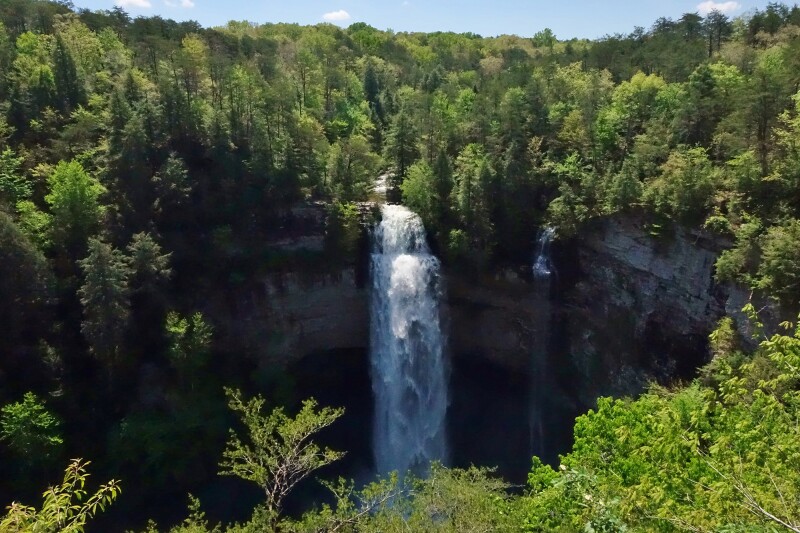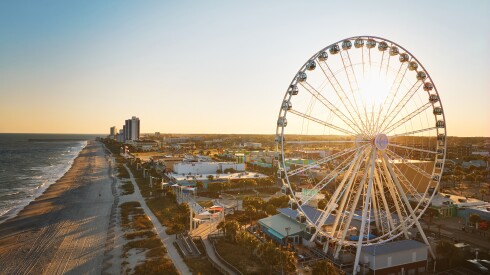When you’re gazing out at the sunrise across the Grand Canyon, wiping mist from Yosemite’s Bridalveil Falls from your forehead, or counting the seconds until an impending eruption of Old Faithful at Yellowstone, government bureaucracy is likely the last thing on your mind. Who wants to think of paperwork and politics when the great outdoors is calling? Then bam—news of a government shutdown breaks and, as a federal agency, the National Park Service (NPS) closes too. But due to recent changes to shutdown procedures, many parks now remain technically open, although understaffed, leaving the visiting public with few resources, little information, and a lot of uncertainty. We’re here to help. Here is a guide to everything you need to know about visiting the national parks during a government shutdown.
First things first: Is it actually possible to visit my favorite national park?
During past government shutdowns, the national parks have closed entirely, most memorably during the first half of the 16-day shutdown in 2013: gates were locked, roads closed, and all services suspended. In other instances, however, states have been allowed to step in and cover the necessary costs to keep their local parks open.
Since January 2018, a new contingency plan stipulates that most parks will remain open during a shutdown, even though the thousands of dedicated employees who protect and run these national treasures will be furloughed. This is likely to change again someday, but in the meantime, the gates are open, and you can still visit, but nobody is home.

Popular areas like Yosemite’s Mariposa Grove are likely to be closed to limit potential distruction to the area.
Courtesy of Shutterstock.com
However, due to the lack of support, parts of the parks may be closed, such as campgrounds, heavily trafficked attractions, or roads that require regular maintenance. Be sure to check the park’s website at nps.org for alerts of these closures, but also mind the notification at the top of the page stating that during the shutdown, the website will not be updated. Many parks are able to post anticipated closure information before shutting down, and some parks do sneak in updates during the shutdown, but it’s worth a quick Google search to see if there is any news about the park you’d like to visit.
But what about my reservation?
Campsite claim jumpers can be a big problem during a government shutdown. Without rangers to supervise reservations and mediate disputes, there’s nothing stopping another group from setting up camp in your reserved area, and you may be left high and dry—especially if you’d snagged a particularly coveted spot. The LA Times reports that users who reserved through Recreation.gov, the booking website for many national parks, and who don’t show up due to this uncertainty can file for a refund and won’t be charged the usual $10 cancellation fee. Reservations at private campgrounds, which are not operated by NPS staff and which remain open, will likely be honored. Related How the Ongoing U.S. Government Shutdown Continues to Affect Travelers
Most park lodgings are operated by private concessioners, which are not required to cease services during shutdowns. If the area surrounding these accommodations remains open during the shutdown, the facility should continue running as usual and your reservation should be honored, but it never hurts to call and double check.
Popular national monuments like the Statue of Liberty and Muir Woods require visitors to make reservations. During the current shutdown, both of these sites have received third-party funding and are set to remain open, so confirmed reservations won’t be affected and future visitors will be able reserve spots as usual.
The new contingency plan also stipulates that outfitter or guided trips in progress at the start of the shutdown will be allowed to continue. But if your trip has not yet commenced, contact the outfitter or tour operator for more information.
Wait, if no one is staffing the national parks, does that mean I can get in for free?
Yes, without rangers to staff park entrances, there is no one to process entry fees. While a free visit is a windfall for many, the loss of these funds is potentially devastating to the parks. The National Parks Conservation Association estimates that the NPS loses $400,000 per day in entrance fee revenue and notes that many parks rely on those funds to cover operating costs.
Consider donating the equivalent of an entrance fee to the park you just enjoyed. It’s easy to make an online donation to the National Park Foundation, and information about donating to specific parks is available on their individual websites at nps.org under the “Get Involved” section of the page menu.

National parks enthusiasts can still enjoy most lookouts, including Mather Point in Grand Canyon National Park.
Courtesy of Shutterstock
So what services and facilities can I expect if I visit a national park
According to the new contingency plan, “Park roads, lookouts, trails, and open-air memorials will generally remain accessible to visitors, but there will be no NPS-provided visitor services, including restrooms, trash collection, facilities and roads maintenance (including plowing), and public information.”
- Most visitor centers will be closed, so don’t expect to be able to be able to ask a question or grab a map.
- Trash services are suspended, so many trash receptacles will be covered to discourage use. Expect to pack out all your trash.
- Many restrooms will be locked, but in some parks, vault toilets do remain unlocked until they become unusable. There won’t be anyone to maintain these, so pack your own roll of toilet paper or take note of the nearest restroom outside of the park.
- Most emergency response personnel are considered nonessential employees and furloughed during a shutdown; if you get injured or find yourself in a dangerous situation, help will not be readily available. On December 24, 2018, during the current shutdown, a man hiking in Big Bend National Park broke his leg and had to be carried out by other hikers. Only one park ranger was available to respond.
- Without rangers, there are no NPS-guided services or educational programs, which can be especially disappointing to families traveling with children. Permits issued for special events like weddings that require on-site supervision are likely to be rescinded.
- Campgrounds are generally open during a shutdown, but they will be closed if conditions become dangerous for visitors or the surrounding environment, particularly as garbage piles up and human waste renders bathrooms unusable.
But there is good news! In some parks—especially popular ones like the Grand Canyon, Yosemite, and Yellowstone—certain facilities and services are handled by private concessioners; many restaurants, in-park lodgings, tour operators, stores, and even some road maintenance services remain open, giving visitors much-needed relief. Again, it’s best to check with the nps.org website to see which, if any, concessioner-provided services are still operating.
Additionally, states and certain foundations often step in and provide funding to keep certain essential aspects of a park—sometimes even the visitor centers—running for as long as they can. Local volunteers, too, make headlines by helping with trash pickups and distributing necessary and educational information to visitors.

State parks, like Falls Creek State Park in Tennessee, are unaffected by federal government shutdowns and remain open and fully staffed.
Courtesy of Shutterstock
Anything else I should know?
It’s even more important to follow Leave No Trace principles when no one is around to patrol the park. A good rule of thumb is to follow the rules as if it’s fully staffed; don’t do anything you wouldn’t want a ranger to catch you doing.
- Don’t sneak into closed areas of the park; without emergency response teams, the potential danger increases dramatically.
- While no one is around to give you a ticket for letting your dog off leash, allowing Fido to roam free puts him at risk of being eaten by wildlife or wandering into dangerous terrain.
- Anything you take in with you should go out with you—not out the window—even “biodegradable” food waste like orange peels.
- Even though no one is watching, stay on designated paths to minimize any negative impacts on the delicate environment.
Also, consider exploring less-visited areas of the park to help reduce overuse; as a bonus, you’ll be less exposed to any garbage pileups and restroom debacles.
It seems like these park visits can be a lot of work. Are there any alternatives?
Don’t forget about nearby state parks! If you’d rather not risk a service-less experience, just head next door. Swap Anza-Borrego for Joshua Tree, Big Bend Ranch State Park for Big Bend National Park, or Falls Creek for the Great Smoky Mountains. The Utah Office of Tourism even has an entire page dedicated to park alternatives.
Finally, we find it helps to take time on the drive in or out to vent any shutdown frustrations by reaching out to government officials and encouraging them to do everything they can to get the parks operating as usual as soon as possible.
>>Plan Your Trip with AFAR’s Guide to the National Parks











